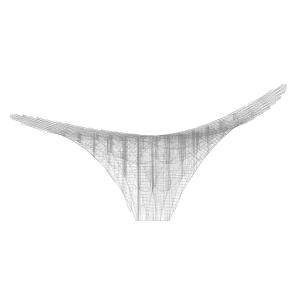parametric structural design
Function follows aesthetics
A prevalent pattern in parametric structure design algorithms is that of the force field. When thinking about what affects the form of an object or building, it is natural to imagine the metaphor of various forces that are pushing and pulling on it. These vectors are rhythmically change direction, shape or intensity based on their location in the force field and the presence or absence of various acting on them.
As Nicholas Negroponte observed, ‘Physical form is the resolution at one instant of time of many forces that are governed by rates of change.’
Gaudi’s use of catenary curves is a prime example:
A category curve is derived directly from the force of gravity applied to a chain when hanging under its own weight an suspended only at its ends. Linking hanging chains together creates a negotiation of forces and resulting structure that exhibits a graceful form constrained by internal topological connections and external forces acting upon it. Our engineers are drawn to these subtle but complex interpolations of form, which result from the application of competing force vectors.
Examples can be found in the rhythmic facade apertures as well as undulating surfaces.











